20 fun and creative visual sensory activities your child will love, plus why visual sensory processing is important, and how to help with visual sensory difficulties in kids.
This post contains affiliate links. See our full disclosure.
Close your eyes and think of your most vivid memory… is it a beautiful tropical vacation you went on? The birth or first steps of your child?
The ability to recall these images so readily is because of your visual processing system.
Specifically, your eyes and brain working together to take in information from the world around you to form memories, assess your environment, and interact with the world.
The visual system is important, and is sometimes forgotten or taken for granted as one of the 8 sensory systems that we have.
But it is a powerful component of sensory processing and can impact kids from birth to adulthood, from learning, to independence, to behavior.
It’s important to understand the visual system, how the visual sensory system works, and what it looks like when your child has difficulties with visual sensory processing.
Then, you can use the visual sensory activities to stimulate and even improve your child’s visual system!
The Visual System
Vision, or our sense of sight, is one of the latest developing sensory systems that a baby is born with. It is why many premature infants have difficulties with their vision system and eyesight, if they didn’t get a chance to fully develop vision while in utero.
The visual system is made up of three parts:
- The eyes
- The optic nerve
- The visual cortex of the brain
You’ll hear a lot in sensory processing or sensory integration about how important it is that the brain and body are connected, and visual senses are no different.
The eyes bring in information from light and the world around us, transmit it through the optic nerve to the brain, and the visual cortex processes the information into images for us to understand and make sense of. Obviously this is a much more complex process, but generally speaking, this is how it works.
Vision is an important member of the sensory system because it is linked to so many other areas.
Possibly the biggest connection is to our balance, through the vestibular system and proprioception senses. While the visual system continues to develop after birth, the vestibular connections of the brain are fully functioning at birth.
This means that early on, movement guides our vision. To safely interact with our environment, our eyes help us bring information in from the physical world, and then our body can respond by moving through it.
As we get older and our vision gets better, our eyes take over to guide our balance. It’s all connected!
In fact, it’s believed that half up to two-thirds of the brain is dedicated to visual processing, so it’s a big deal and definitely something to take into consideration with our sensory kids.
Types of Visual Sensory Processing
Visual processing can be broken down into different categories based on the information the eyes are taking in and what the brain is interpreting from the information.
Even if a child has perfect, 20/20 vision, they can still struggle with the visual sensory processing in the following areas:
- Visual Closure: A child’s ability to envision or “close” an entire image, even if given a partial image. For example, if a child looks into a drawer and sees a portion of a sock, their brain knows that the entire sock is there, despite part of it being hidden.
This skill is important for reading, as it allows children to read words by sight instead of discerning the entire word by each letter. It is also important for locating items as mentioned in the scenario above, completing puzzles, and other play activities.
- Visual Discrimination: A child’s ability to tell the difference between variations in images, such as the difference between an “S” and a “5.”
This is important for memory, math, reading, writing, and learning skills. Understanding subtle differences between images is the basis for many school readiness skills, as well as independence skills such as knowing which shoe goes on which foot.
- Visual Figure-Ground: A child’s ability to differentiate an object from its environment or surroundings.
If you go back to the sock-in-drawer scenario, visual figure-ground skills help your child see and focus on the sock they’re looking for, while also tuning out and ignoring the other articles of clothing that might be mixed into the drawer.
This skill is also important for reading, so that your child can track the word they’re on while tuning out the rest of the page.
- Visual Form-Constancy: A child’s ability to mentally manipulate an object, such as rotate, change size, or recognize something regardless of the orientation
This skill allows your child to recognize shapes, letters, or words even if they’re written in different fonts, oriented in different ways, or in different sizes. If they know what an “A” looks like, they can translate that shape into various scenarios and know that it is still an “A”.
- Visual Memory: A child’s ability to mentally recall or numbers, shapes, letters, or objects appear without visual prompt or visual cues.
Remembering a sight word, copying a sentence from the board to a paper, or remembering what their backpack, cubby, or jacket look like all depend on this skill.
- Visual Sequencing (or Visual Sequential Memory): A child’s ability to recall objects in a correct order, such as spelling words correctly, remembering the alphabet, or numbers in a sequence.
Difficulties with Visual Sensory Processing
Our vision is such a powerful sense that it can take over information coming in from the other senses, which is sometimes helpful, but other times problematic.
For example, in a classroom, if a child is constantly distracted by bright fluorescent lights or busy decor, it can be all they focus on, leading to learning difficulties and overstimulation. This can be overwhelming to a sensory sensitive or sensory avoidant child.
Other kids who have sensory seeking tendencies may seek extra visual stimulation through bright or flashy lights, dropping or waving items in front of their field of vision, or even using their hands to press on their eyes or excessive blinking to get more input of sensory information.
Vision is so powerful it can be connected to other sensory needs or difficulties from picky eating (causing a child to be overwhelmed by or put off by the look of food) to trouble with social interactions and emotional skills (trouble with eye contact or spatial awareness).
Balance, coordination, and independence can all be impacted when a person isn’t processing visual information correctly.
And while it is almost always linked to another part of sensory issues, a person can have sensory processing disorder (SPD) that specifically targets vision.
This is called visual processing disorder. Here are some specific signs of visual processing disorder:
- Increased sensitivity to light (sunlight or bright lights such as fluorescent)
- Being easily distracted by visual stimuli in the classroom or home wall decorations, or difficulty keeping visual attention to a learning or play activity
- Frequently squints, rubs or pushes on eyes, or complains of a headache after vision activities such as reading, using a phone/tablet/computer, or watching television
- Trouble finding things they are looking for, even when they seem to be “right in front of them”
- Poor hand-eye coordination and fine motor skills
- Difficulty tracking across a page while reading, or while learning to read
- Difficulty copying from the chalkboard, or while learning to write
- Doesn’t seem to notice environment including safety concerns
- Poor spatial awareness
As you can see, these encompass the different types of visual sensory processing mentioned above.
For more severe situations of visual sensory difficulties, or visual impairments, kids can benefit from vision therapy from a specialized occupational therapist, or neuro ophthalmologist as well as sensory integration therapy.
The good news is, there are a ton of benefits to visual sensory input, and many of these issues can improve with the right activities that you can easily work on at home. We’ll get to those in a second.
Benefits of Visual Input
Like any other area of sensory, visual sensory processing can greatly improve with the right strategies or sensory activities, consistently used over time.
Visual sensory activities teach kids to use their problem-solving, critical thinking, and memory skills, along with providing opportunities to build brain and body connections to help with self regulation.
We notice with our sensory kids that often it’s not one sensory area being challenged, and there is no hard and fast rule for whether a child is ALWAYS sensory seeking or ALWAYS sensory avoidant. It often varies.
Knowing what to look for in your child’s behavior is key to addressing their sensory sensitivities with the right visual input.
To get a clearer idea of ALL your child’s sensory needs across the 8 senses, I highly recommend our 1 hour free sensory workshop to get deeper strategies for helping your child with their sensory needs.
20 Visual Sensory Activities
Great news, visual sensory activities are do-able for parents to use at home or therapists to incorporate into their treatment sessions. Chances are, you already have the supplies or can simply use the environment around you!
These activities are perfect for sensory seekers, and some can be used for visual avoiders, and may help decrease some of their sensitivity to visual input. Of course all of these visual sensory activities also encourage the development of vision:
1.Visual search games like hidden pictures and word searches. Keep in mind that some kids can get overwhelmed with these types of games, especially if there are difficulties with their visual system.
Make sure you choose age appropriate versions. A toddler might benefit from simple “spot the shape” style Hidden Pictures, while an older elementary aged child or teen will need to be challenged with a Where’s Waldo? style book.
I Spy books are good for kids in the middle!
2. Use a flashlight or laser pointer in a dark room to locate a picture on the wall or hidden item. As the adult, be in control of the light first and see if your child can track the light as you move it around the room.
Also try turning it on and off so they have to find it and name the object it’s on. As you flash it around the room, your child might call out, “Pillow, ball, my cup, etc.”
Undoubtedly, your child will want to also have a turn pointing the flashlight and having you guess! This also has visual processing benefits as they
3. Color mixing and simple sensory experiments using paint, food dye, or baking soda and colored vinegar
Have your child pick 2 colors and make a guess as to what color will be made once they are mixed. Or, mix a drop or 2 of food coloring into dry baking soda and a different color into vinegar, and have your child mix together.
The bubbling reaction adds another stimulating image for their eyes to watch. Be careful with this one to not get too close because the smells and bubbles can be too much input for some kids.
4. Visual tracking using a marble tower, maze game, etc.
Have your child pick a colored marble to watch and “see if it wins” in a race with other marbles. The smooth tracking of a marble through a tower or maze is great exercise for the tiny eye muscles as well as a great attention skill.
5. Puzzles
Based on your child’s age and developmental level, you can start as simple as a 2-4 piece knob puzzle and work your way up to a complex puzzle with many pieces.
The key here is to offer your child a challenge that pushes their skills but allows them to be successful to build confidence and make sure they enjoy it.
6. Dot-to-dot coloring activities
7. Direction-following art kits like perler beads, lego building, etc.
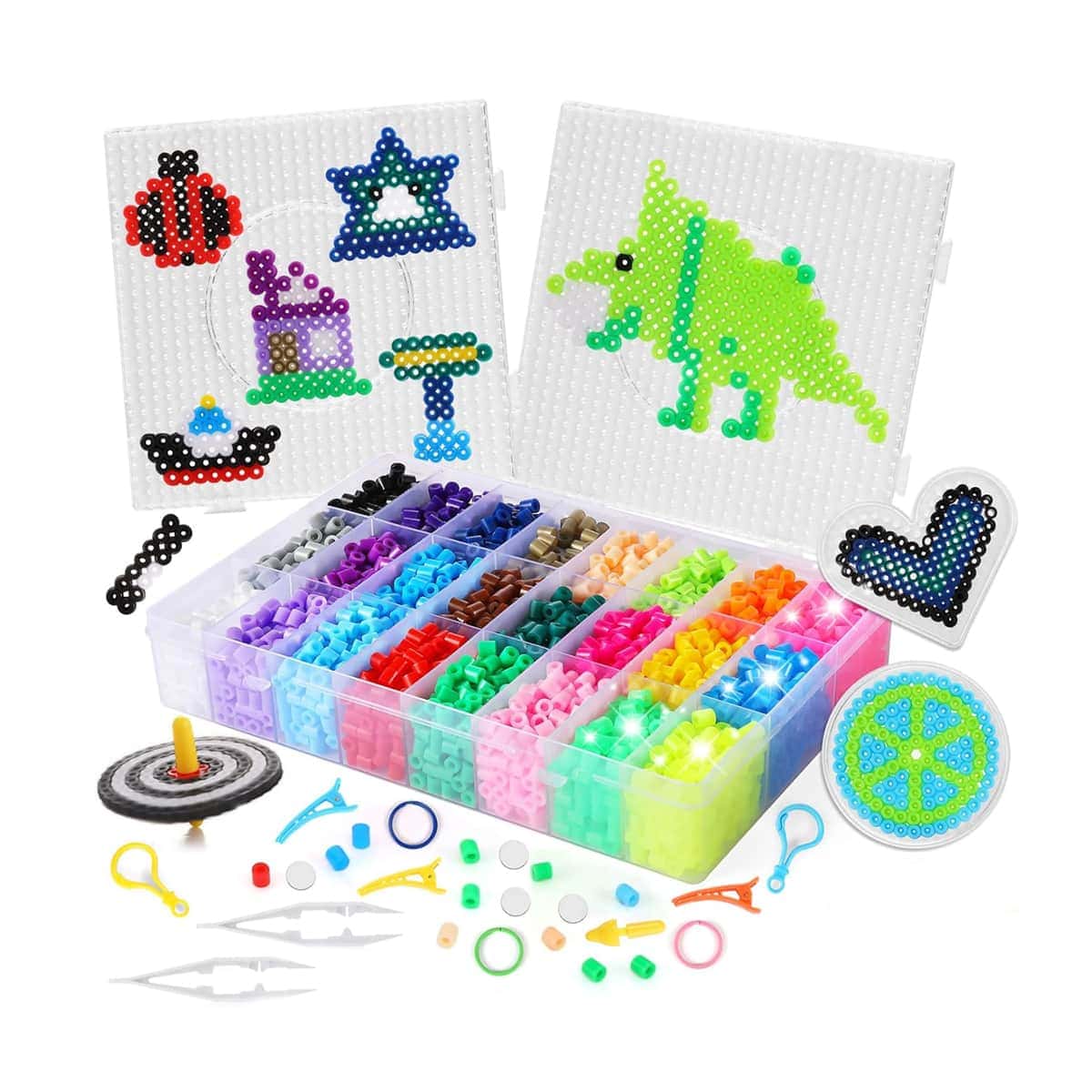
8. Passive visual tracking like lava lamps, sensory bottles, projectors
These slow-moving objects are great for calming and focus for kids during nighttime or when they are overstimulated and are trying to regulate themselves. Sensory bottles can also have hidden objects in them, and you can easily make one yourself.
9. Building activities like tangrams, and building blocks with different shapes
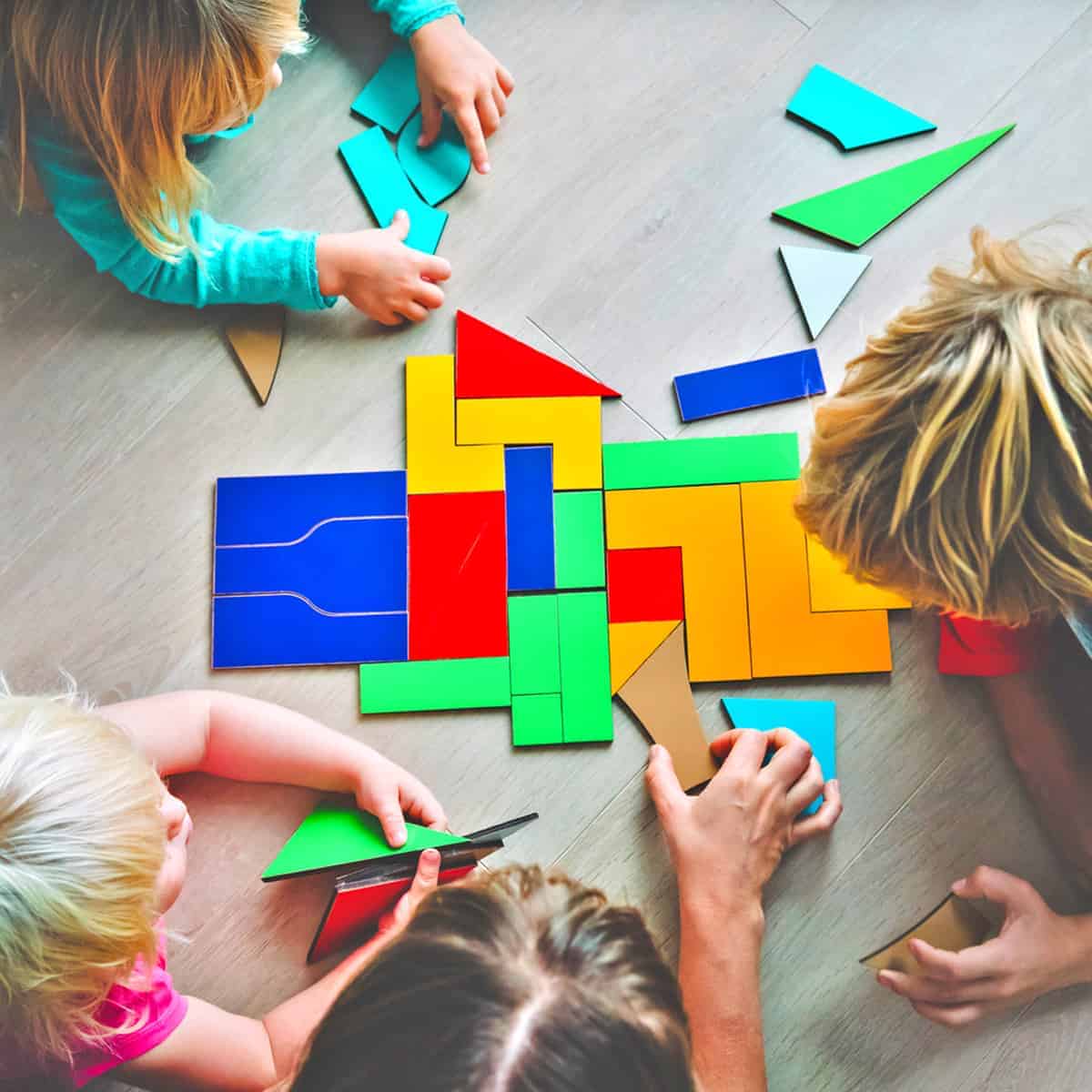
10. Matching and “spot the difference” games like Spot It.
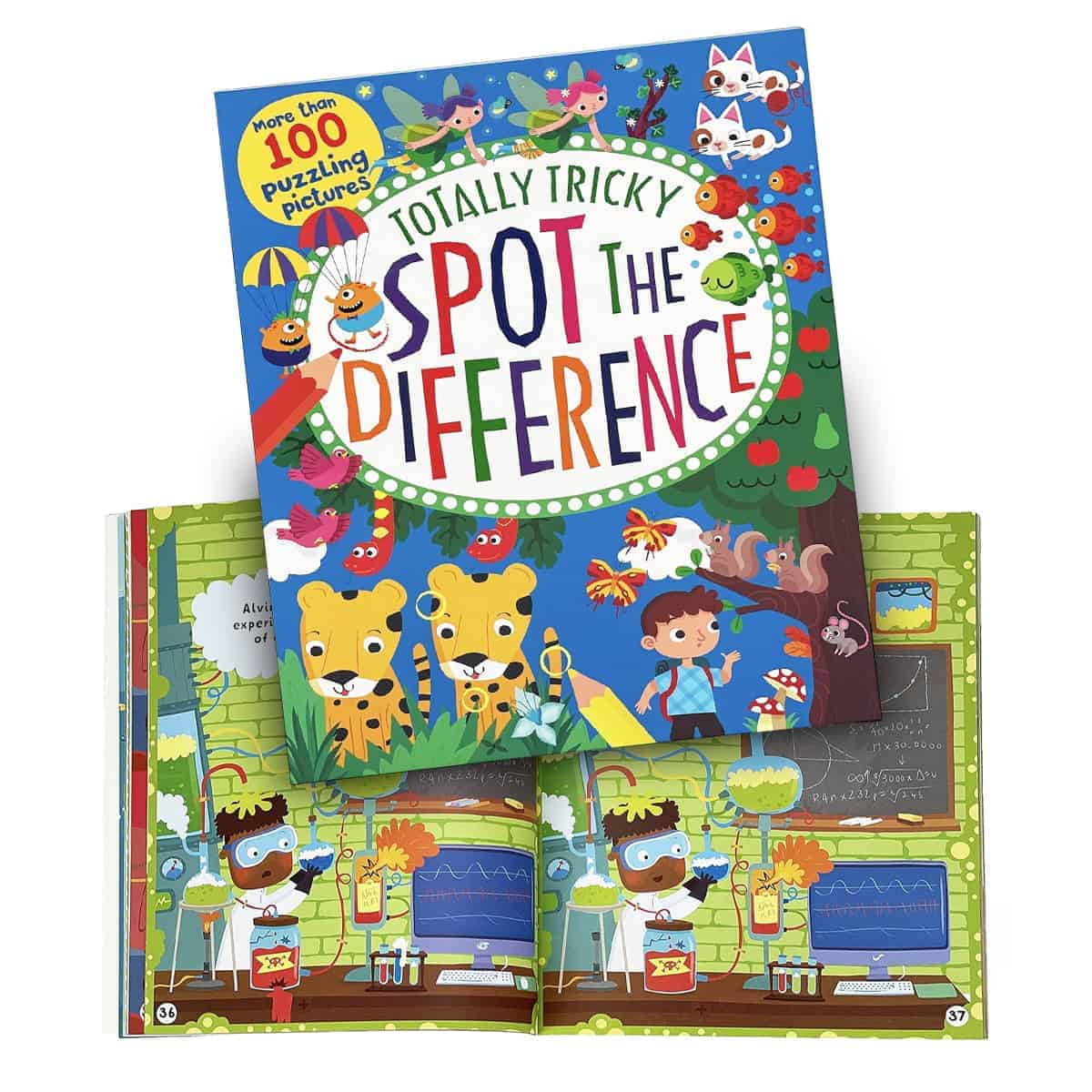
11. Use glow sticks at night to make jewelry and have a dance party. Or, use the glow sticks on a flat surface like a table in the dark to create letters, numbers, and shapes.
12.Reassemble comic strips in order
Find a comic-style book or cut out a strip from a newspaper (best if it’s in a character that your child is already interested in). Cut the different frames apart in as few or as many as you want, depending on your child’s level of interest and ability to track.
Mix up on a table and ask your child to look at the images and try to piece the frames back together in a sequence that makes sense based on the pictures. This is also a great activity for building language skills!
Ask your child, “what do you think is happening in this story?” or “What happens next?”
13. Nature drawing: have older children sit outside and draw something they see like a tree, lake, playground, etc.
14.Light box play like Lite Brite
Try experimenting with an inclined or vertical surface to see if it makes a difference for your child. Having a light behind an activity helps bring attention and visual stimulation to the game.
15. Play in sensory bins or a sensory table with different textures, encouraging scoping and dumping and watching the material in the sensory bin, fall. This also works to build up other sensory areas such as the tactile system
16. Play with visual sensory toys, like light up fidget and spinning fidget toys. The now classic fidget spinner gives lots of visual input. That’s why so many kids like it!
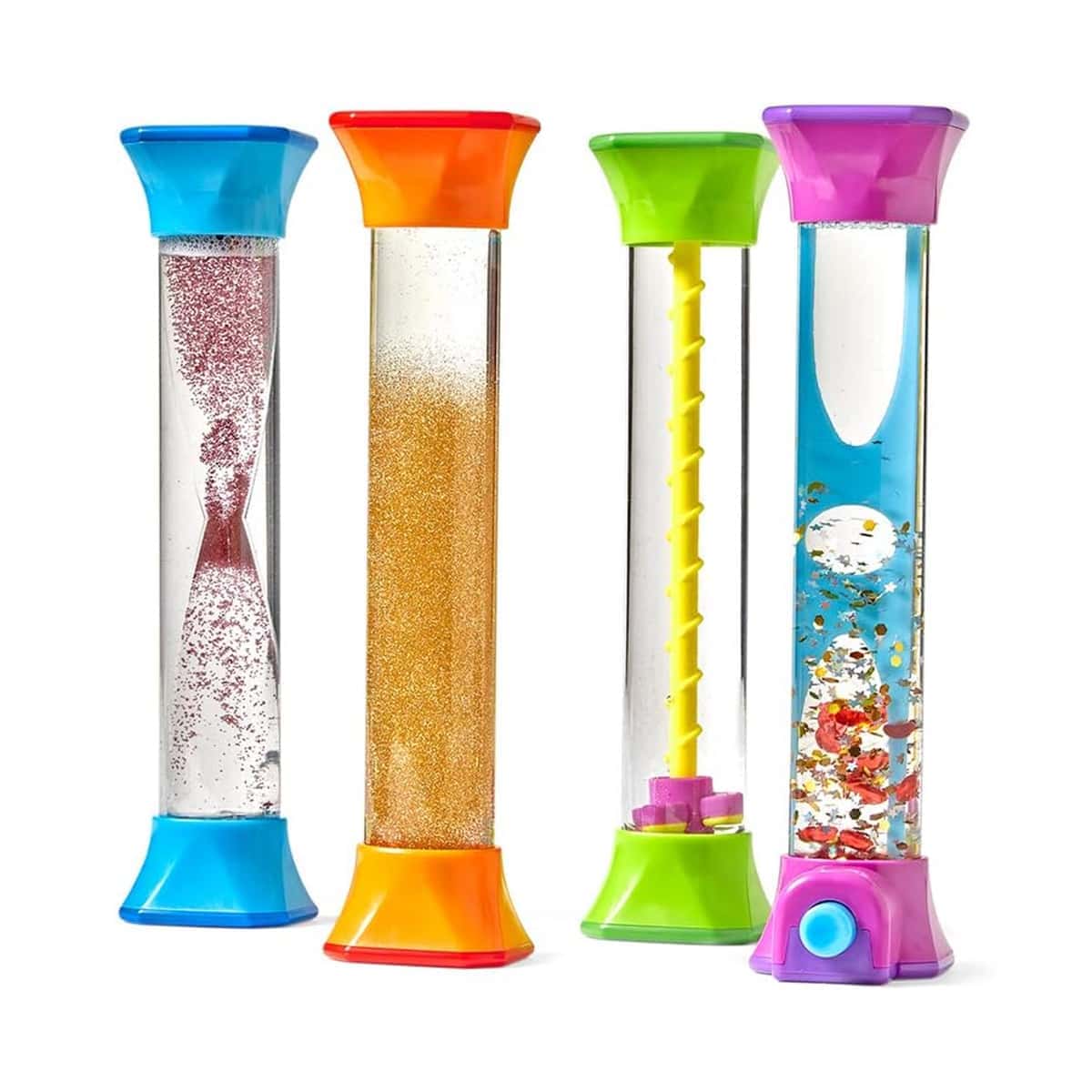
17. Target games like darts, corn hole, and bean bag toss
18. Paint by number
19. Play “Be My Shadow,” a simple game where you take turns imitating facial expressions, gestures, and movements of another person.
Either using a mirror or standing with 2 people face to face, have one person make a facial expression or movement with their body. The other person or child will copy or mimic the expression or movement as closely as they can.
You can also use a magazine or cards with emotions for your child to look at and try to imitate.
20. Look through a kaleidoscope
21. Spin tops to give lots of visual input and work on fine motor skills.
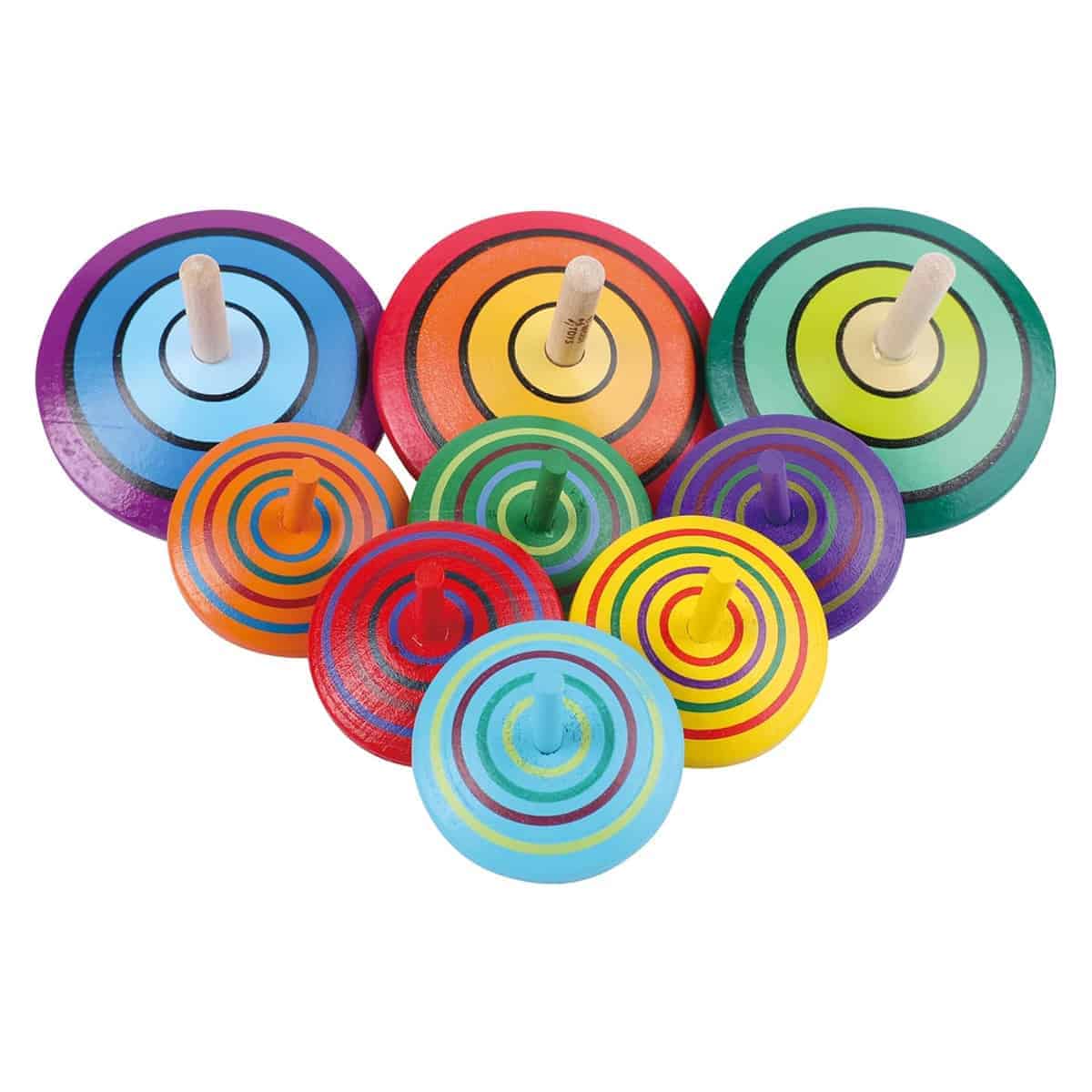
22. Color in coloring books with high contrast designs. Using gel pens, glitter crayons, and bright colored markers will all give more visual input too!
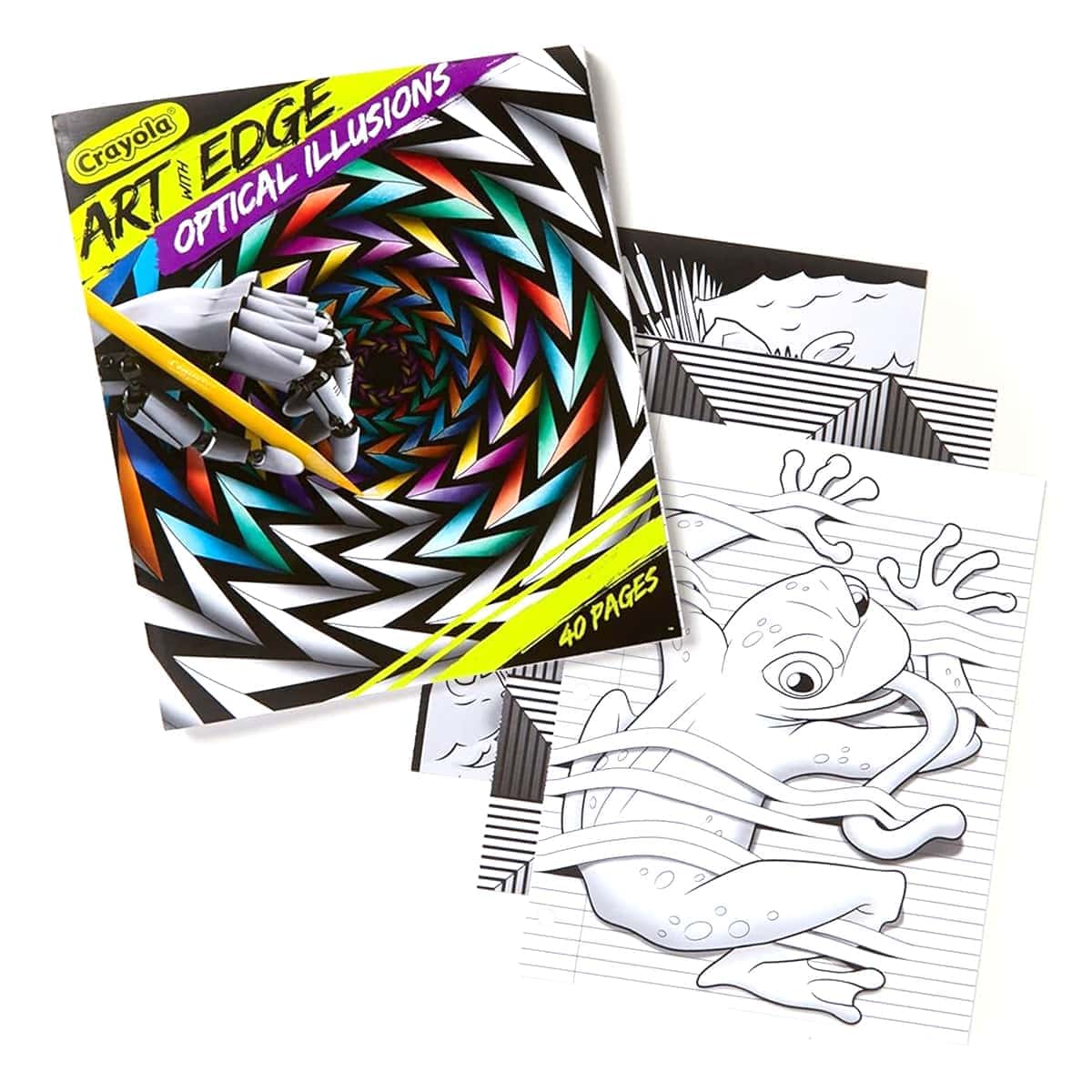
23. Use electronic memory games like Simon. These games have lights that appear in a pattern and kids have to copy the same pattern they just watched the lights flash in.
Strategies For Visual Sensitivities
It’s also important to consider the sensory kids that have visual sensitivities. While many of the visual sensory activities above may be accepted, some like using sensory toys with bright lights or can be irritating.
It’s always best to support a child’s sensitivity to light and be respectful that what doesn’t cause discomfort to your eyes, very much may to their eyes.
There are a variety of simple ways you can offer them this support:
- Decreasing clutter and visual distractions in the classroom, bedroom, or around the house
- Using a visual schedule for activities that have multiple steps to lay out a clear sequence of what to do in an order that makes sense. Visual schedules are helpful for helping kids with routines.
- Have your child wear a wide-brimmed hat or sunglasses where there is bright light like or it’s visually distracting. Sunlight and fluorescent lights can be particularly difficulty so using these outdoors, in large stores, or school can be helpful.
- When your child is overstimulated visually, allow them to put a sleep mask on and lay down, or to cover their eyes.
- Consider “transition” lenses that automatically darken for children who wear glasses and are frequently outdoors
- Allow child to sit near the front of the classroom, theater, or public place with fewer visual distractions so they can focus on board, stage, etc.
- Use calming, muted colors for decor and environment when possible
- Encourage slow paced shows and games during screen time, or cut screen time entirely. Learn tips for decreasing screen time for sensory kids, and why this can help.
Want More Sensory Activity Ideas to do with Your Kid?
There are so many fun and beneficial sensory activities for kids, but most parents don’t know them. Grab our cheat sheet with 25 of our favorites. There are some other surprises in our Sensory Essentials Printable pack!
Learn More About Visual Sensory Activities
Visual Perceptual Activities: 4 Ways to Boost Your Kids’ Development
34 Sensory Room Ideas to Calm Kids Down on a Budget
Occupational Therapy for Autism: How Does it Help?
40+ Easy Sensory Obstacle Course Ideas for Kids
Laura Mau is a licensed occupational therapist and member of the Your Kid’s Table team. She has over 8 years of clinical experience in helping families navigate complex feeding and eating, sensory processing, and reaching developmental milestones with their children. She currently practices in Colorado and has 2 young kids of her own.
Alisha Grogan is a licensed occupational therapist and founder of Your Kid’s Table. She has over 19 years experience with expertise in sensory processing and feeding development in babies, toddlers, and children. Alisha also has 3 boys of her own at home. Learn more about her here.
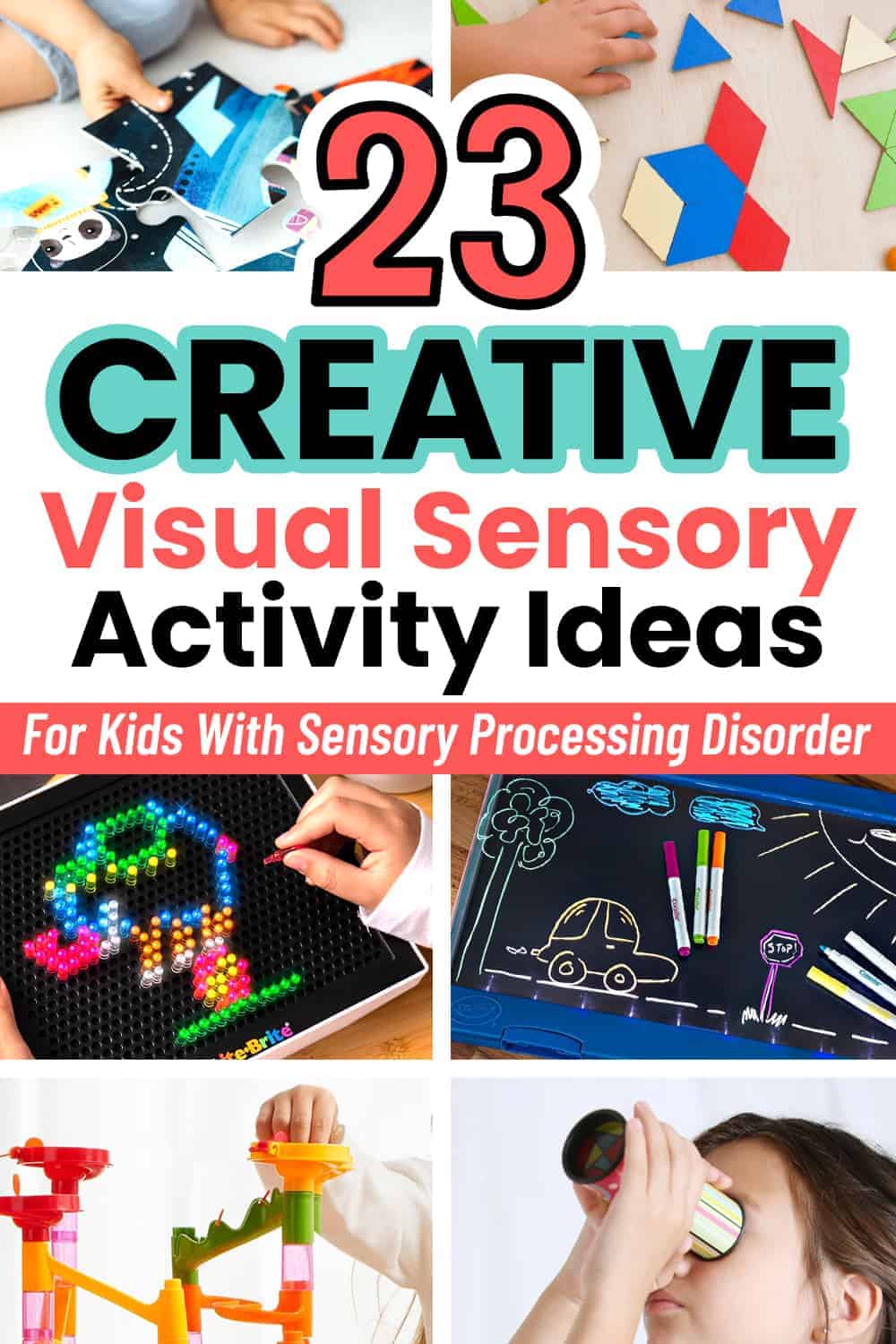
would it be possible for me to share this information in your very well written article with some of our TAs?
I’m a slp in an elementary school in NJ.
Absolutely! Thank you for sharing!
Best,
Laura
Your Kid’s Table team member